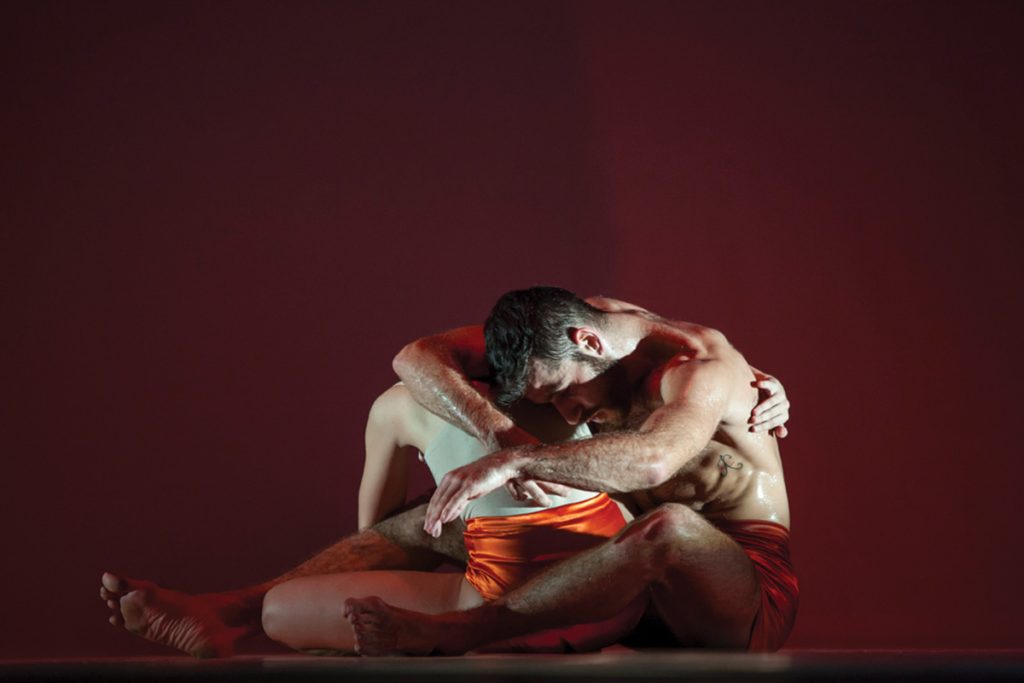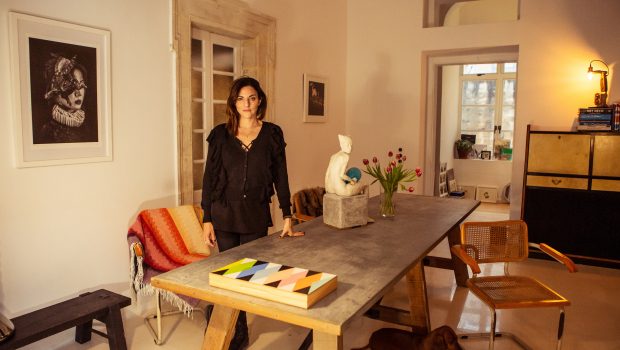The country’s first National Dance Company
In 2014 the establishment of ŻfinMalta, the country's first National Dance Company, was pivotal in connecting Malta's dance artists with their international peers while providing a space to develop professionally. In this time, ŻfinMalta has introduced audiences to new ways of thinking about contemporary dance through bold, current productions of a world-class standard. The company is now in the middle of its eighth season, with Malta's theatres back to full capacity. Artistic Director Paolo Mangiola talks about the company’s mission and his experience of leading a dance company through a protracted period of closed theatres and borders.

Paolo Mangiola joined ŻfinMalta in its third season and has been instrumental in establishing its place in the international dance community. Notably, he has embedded a spirit of collaboration, engaging choreographers, set and costume designers, composers, and visual artists from Malta and internationally, and partnering with other theatre, opera, music, and the visual arts practitioners. Mangiola’s vision for the company is supported by his own outstanding credentials and profile as a choreographer, dance educator and performer, from dancing for Wayne McGregor, Deborah Hay, Martin Creed, and Mauro Bigonzetti, to creating works for the Royal Ballet, Tanztheater Nürnberg, and Balletto di Roma, and choreography performed in the UK, the US, and across Europe.
When did you take up the role of Artistic Director for ŻfinMalta and what was your vision for the company?
I took the leadership of the company in 2017, following the company’s first three seasons. It was an exhilarating time for Malta’s contemporary art scene, in the lead up to the European Capital of Culture in 2018, and the appointment came as a beautiful surprise. At the time, I was the youngest director leading a national dance company in Europe, and it was an opportunity to shape a relatively new, fully government-funded dance company. My vision was, and still is, to foster a culture supporting contemporary dance in Malta through relevant and intelligent dance works which inspire and move audiences. I have set out to commission and present multidisciplinary, challenging, and unique works, providing an enriching experience for everyone involved – audiences and collaborators.
What have been some key milestones in your journey with ŻfinMalta and fulfilling that vision?
In these past five years we have performed works for different settings and different audiences. We have produced a durational piece of six hours, which was also intergenerational, created works for younger audiences, and opened the Valletta 2018 Capital of Culture. In addition, we made two beautiful films and created an online series on the making of choreography. I have the privilege of working with a fantastic team of people whose incredible dedication and professional skills have made all this possible.
What does it mean to be a repertory dance company?
A repertory company provides a platform for choreographers, artists, and experts from different fields to meet, create and present new and existing dance works which are relevant and current. For me a repertory company is a tool that allows spectators to experience the richness of contemporary dance and its universe through different voices. We work with artists and choreographers whose ability to capture the spirit of our time is in their DNA. Their work is beautifully crafted and expressed through the expertise of our ten full-time dancers who move from one choreographic signature to another. Every artist engaged with the company is asked to share their ideas and methodology generously with the dancers and to communicate in a way that is accessible to all our audiences, regardless of whether they are experienced dance spectators or attending for the first time. The goal is always an evening of diverse dance, of the highest calibre, here in Malta and abroad.
What is the role of a National Dance Company? And where do you see the company and your work on the international dance scene?
The role of a National Dance Company is multi-faceted. First and foremost, it is to provide Maltese audiences with the highest quality dance performances and to allow everyone to experience the transformative power of dance through intelligent and well-curated programmes. This includes accessibility through diverse activities, which show how dance can be a part of everyone’s lives. As well as live performances, we have an outreach programme tailored for young students and professionals and participatory projects for a broader audience.
What artistic trends do you see happening in dance right now? What excites you?
It’s hard to speak of trends as dance in the west is very influenced by our recent history, and in the big breakthrough of postmodernism, we all flirted with those ideas until now. To think of trends is to consider the exposure first, and there are a lot of young makers creating interesting works who don’t have the resources to present it. This is once again where a repertory company comes into play. I am excited by work that speaks to me and challenges my understanding of its creation. As a curator and choreographer, I see a lot of dance, and I try to navigate that scene both in the mainstream and on the periphery where artists are experimenting with movement. This is what excites me, artists who are not afraid to break with convention and explore new methods of creation, challenging the codes of ballet and other practices.
What legacy would you like to leave with ŻfinMalta as Artistic Director?
I would love for the company to become a firmly established cultural hub in the Mediterranean. A place where artists feel able to take risks and a company that is loved by the broadest possible audience. I believe we have laid the groundwork for this to happen, so I can only hope that when the time comes, my leadership will leave a legacy for the next generation to build on this foundation.
For ZfinMalta’s full repertoire and season programme – www.zfinmalta.org









